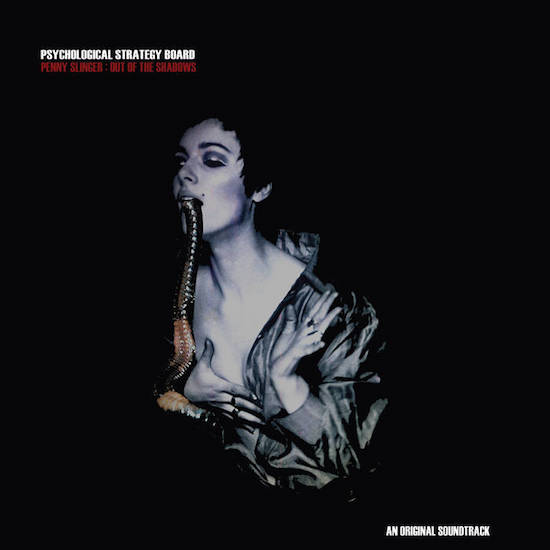This is the music for Richard Kovitch’s documentary about Penny Slinger and her powerful feminist surrealist work. But Maybury and Paul Snowdon, in their Psychological Strategy Board guise, didn’t have much footage from the film to work from when they were making the soundtrack, so they immersed themselves in Slinger’s artwork and in Jane Arden’s disturbing and disruptive 1972 film The Other Side Of The Underneath (which also features prominently in the new film). The result is a record which is inherently cinematic and which also tells its own distinct story.
Divorced from any moving and still images, the album distributes heightened unease and teeters on the brink of dissolution as the duo distill an avant-industrial brew teeming with claustrophobia and uncertainty. Shuddering bass and stumbling electronics nag at the back of the neck, adding tension to the twisted strands of multi-layered reverberations, the sputtering and the fragmentary speech.
In one of the repeated images in Out Of The Shadows, the camera sweeps through attic corridors propelled by the haunted ticking of liminal liquid clocks and the shimmering internal thrumming of prepared and restructured piano strings. This is the ancestral country estate of Slinger’s then-lover Peter Whitehead. The sprawling, largely abandoned property provides the backdrop to their experimental film Lilford Hall (1969) and the psychologically charged collages in Slinger’s key 70s book of photographs, An Exorcism, which is the focus of Kovitch’s film.
This music is not as revolutionary as Penny Slinger’s art was 40 years ago, but it expresses a similar dissatisfaction with the status quo. There’s a sense that reality is being approached from several angles, and that sound can be turned in different ways – just as Slinger’s often uncanny images manipulated and repeated photographs of her own face and body until they became re-purposed, represented anew and with a critical, often mordant and psychogeographical eye.
That process is reflected throughout the record. The cycling aural pathways that Maybury and Snowdon follow step outside conventional notions of rhythm and seem to avoid or abstract melody wherever possible. Instead they bring texture and tone to the fore, resonant waves and clatters express reinvigorated ideas of how to communicate through sound. They are making changes to the listener’s perceptions of time and motion that remain fresh, even if the groundwork was laid for these forms long before the 70s, let alone now. But that’s probably not the point; whether accompanying the film or in their own right, these compositions travel out of the quotidian. This is film music that can engage directly and can flow gently into the backdrop. Like the art that inspired it, Out Of The Shadows rewards deep exploration and repeated visits.


